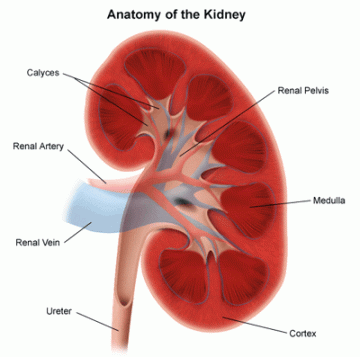End-Stage Renal Disease (ESRD)
Find your care
We deliver customized urology care based on your unique needs. To learn more or connect with a urology specialist, call .
What is End-stage Renal Disease?
End-stage renal disease (ESRD) occurs when the kidneys are no longer able to carry out their daily functions, requiring either dialysis or transplantation to sustain life. The National Kidney Foundation estimates that nearly 500,000 Americans are either on dialysis or living with a functioning transplanted kidney. This number is likely to rise dramatically given the growing numbers of people at the highest risk for ESRD: seniors; people with diabetes, hypertension, or who are obese; and members of certain ethnic communities, including African Americans and Hispanics.

When properly functioning, kidneys act to filter the body of metabolic wastes, which are excreted as urine, and to maintain fluid balance. Chronic kidney failure – a decline in kidney function most often related to diabetes or hypertension but resulting from other causes as well, including vascular disease, genetic disorders, and exposure to toxic levels of certain drugs – affects approximately 26 million in the United States . If the condition is detected and treated early and aggressively, many of these individuals can avoid complications, including progression to ESRD. But in the vast majority of cases, chronic kidney disease is not detected in the early stages – and by the time people have symptoms, the disease tends to be well advanced.
Symptoms
ESRD typically occurs when chronic kidney failure has progressed to the point that kidney function is less than 10 percent of capacity. At that point, the body is no longer able to produce urine normally, if at all. Other symptoms may include loss of appetite, fatigue, headache, confusion, nausea, vomiting, seizures, itchy skin, generalized swelling, yellow skin tone, and easy bruising or bleeding.
Treatment
When end-stage kidney failure occurs, only dialysis or transplantation can prevent the otherwise fatal buildup of fluids and wastes. There are two types of dialysis. Hemodialysis uses a machine to clean the blood of wastes, usually in three weekly sessions of several hours. Peritoneal dialysis, in which a plastic tube is placed into the abdominal cavity and a solution is pumped through it to wash around the intestines, can be performed at home, but requires more time. Both forms of treatment have potential complications, ranging from anemia and infection to sleep disorders, anxiety and depression.
A , from either a deceased or a living donor, enables patients to avoid or stop dialysis, and can extend life expectancy; however, there is a risk of rejection, and the patient needs to remain on immunosuppressant drugs, which can have significant side effects. The United Network for Organ Sharing governs the process of obtaining a kidney from a deceased donor through a system that considers genetic match and length of time a patient has been waiting. Unfortunately, a shortage of organ donations has led to a long and growing waiting list. In some cases, patients receive a kidney from a living donor – a genetically compatible individual with two healthy kidneys who volunteers to give up one of them for transplant.
Prevention
The best strategy for preventing ESRD is to detect chronic kidney failure at the earliest possible stage so that the decline in kidney function can be slowed through the use of medications and tight control of blood sugar and blood pressure levels. Doctors can perform simple screening tests to check for certain protein levels in the urine and calculate kidney function based on creatinine levels in the blood. Routine screening is recommended for anyone over the age of 60 or who has diabetes, hypertension, and/or a family member with kidney disease.